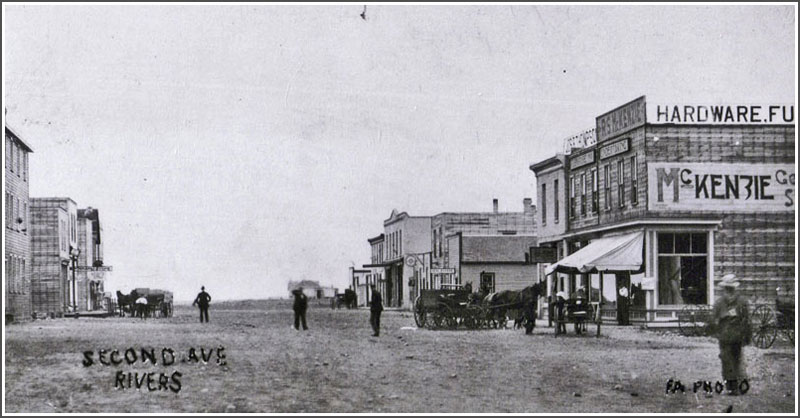|
A Grand Trunk Pacific Decision
Changes Everything

Second
Avenue during the building boom that followed the arrival of the new
rail line. Photo courtesy the Archives of Manitoba
Setting the Stage
With the exception of towns located on the CPR main line such as
Carberry and Oak Lake, most rural centres in western Manitoba followed
a similar development pattern. Settlers came and established farms.
Transportation was by foot, ox cart, and horse-drawn wagons. Delivering
products to market was difficult and prosperity hinged on the arrival
of a railway branch line.
They waited. In Melita, to the south, they waited for about ten years,
in Birtle to the north they waited about seven. Settlers in the Rivers
area occupied a middle territory between the original CPR main line
(1882) to the south and the newer northern line (1885) through
Minnedosa. Although this presented some hardship, settlement was
progressing.
In 1902, the much-anticipated CPR Lenore Branch line connected the
district to Brandon and the main CPR line. The accompanying
establishment of both retail services and elevators made life easier
for everyone. It was progress, but perhaps not a big readjustment in
social cultural or economic life.
It was the second railway endeavour that would have the largest impact
on the economic and social development of the area.
The Grand Trunk Pacific in Rivers
The creation of a second line almost paralleling the first brought
important and lasting changes. Whereas the first line was a CPR branch
connecting to Brandon, the second line established Rivers as the
important centre of the region.
Almost overnight Rivers went from being farmland to hub of economic
activity.
The implications for the entire municipality were far-reaching. With
the establishment of rail service and retail establishments, trips to
Rivers replaced trips to Brandon. The nearby settlement of Wheatland on
the rival CPR branch line was eclipsed. The railway jobs attracted
people from a wide variety of places, broadening the social and
cultural makeup of the region.
This vital connection to the rest of the country forever changed life
in Rivers and area.
|